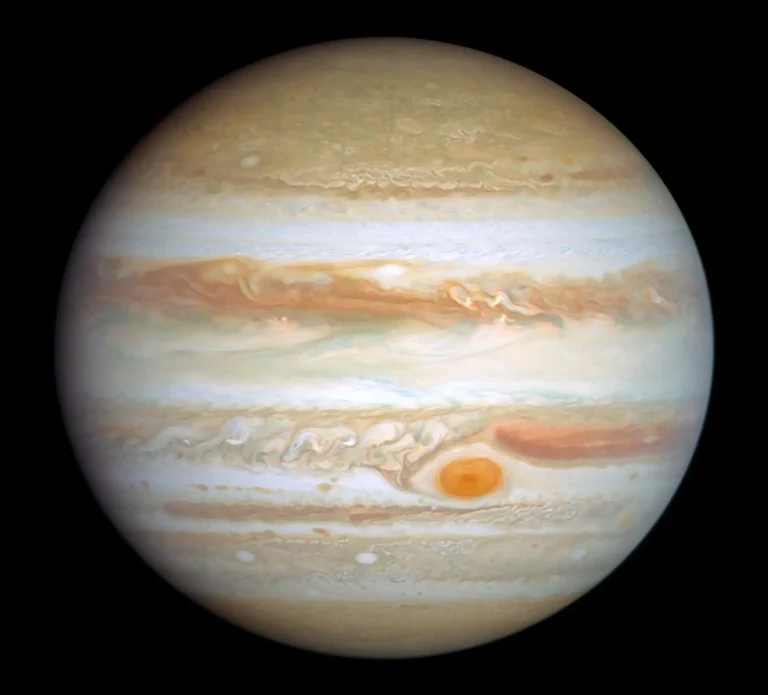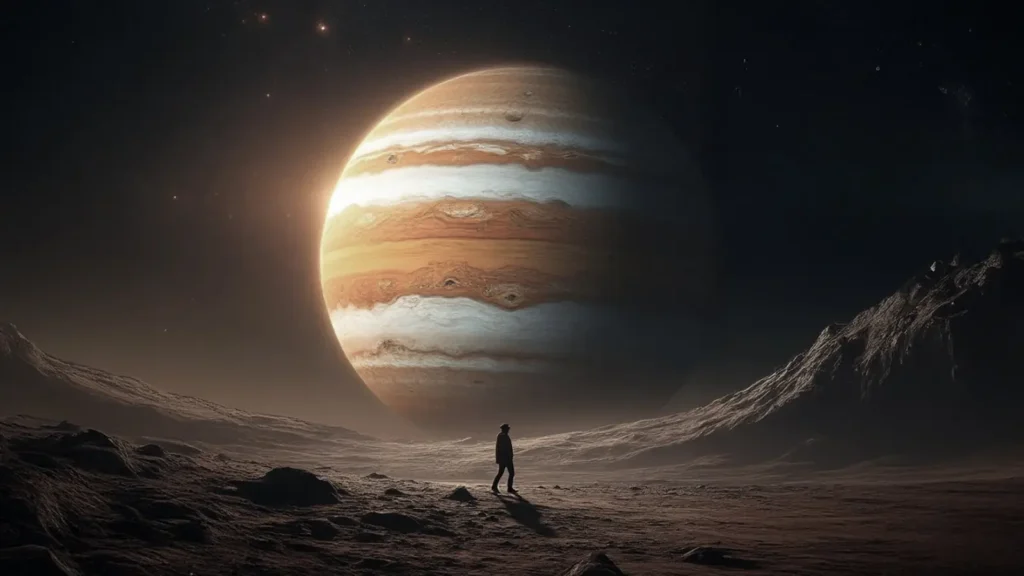Rain on Jupiter
Jupiter is a planet full of mysteries — it’s massive, stormy, and has no solid surface. But one of the most surprising discoveries about this giant world is the type of rain it may experience. Unlike Earth, where raindrops are made of water, Jupiter’s rain is thought to be made of something far more valuable — diamonds.
Let’s break down what rain looks like on Jupiter, how it happens, and whether scientists believe it really rains gems in the planet’s atmosphere.

What Actually Falls from Jupiter’s Sky?
Jupiter’s atmosphere is made mostly of hydrogen and helium, with small amounts of methane, ammonia, and water vapor. These gases form thick cloud layers that swirl around the planet in strong jet streams and massive storms.
Now here’s the surprising part: deep inside Jupiter’s thick clouds, scientists believe that carbon atoms can be transformed into diamonds due to the planet’s extreme pressure and lightning storms.
This means that instead of water droplets, Jupiter might experience diamond rain — tiny crystals of carbon falling like hailstones.
The Science Behind Jupiter’s Diamond Showers
So how does a gas planet create diamond rain? It all comes down to intense pressure, heat, and powerful lightning.
First, high in the atmosphere, strong lightning storms break apart methane gas. Methane is made of carbon and hydrogen, and when it breaks, the carbon atoms are released.
These carbon atoms fall deeper into the atmosphere where pressure increases. At a certain depth, the pressure becomes so intense that the carbon forms graphite (the same material used in pencils). As the carbon continues to fall deeper, the pressure becomes even greater — enough to turn graphite into diamond crystals.
It’s just like nature’s own diamond-making machine happening thousands of kilometers below Jupiter’s cloud tops.
Does It Really Rain Diamonds?
Scientists haven’t directly seen diamonds falling in Jupiter’s atmosphere — we can’t send probes that deep because the pressure and temperature are just too extreme. However, lab experiments on Earth and data from NASA’s spacecraft have shown that the conditions inside Jupiter match those needed to form diamonds.
So while it’s still a theory, it’s a very strong and scientifically supported one. And the idea that a planet in our solar system could rain diamonds is both fascinating and mind-blowing.
What About Water Rain Like on Earth?
That’s a great question. Unlike Earth, Jupiter doesn’t have surface-level water rain. While there is some water vapor in the atmosphere, most of the precipitation comes in the form of ammonia ice, hail, or snow, especially in the upper cloud layers.
Water droplets do exist deeper inside the atmosphere, but it’s too hot and pressurized for them to fall like rain. So while Jupiter has clouds and storms, the rain as we know it doesn’t happen there.
Are Jupiter’s Storms Connected to Its Rain?
Definitely. Jupiter’s storms are some of the most powerful in the solar system. The best-known one is the Great Red Spot, a giant storm larger than Earth that has been raging for centuries.
These storms generate massive lightning bolts, which are much stronger than lightning on Earth. That lightning is what helps break down methane and start the chain of events that can lead to diamond formation.
In short, the same storms that create Jupiter’s dramatic appearance also help produce its unusual rain.
Do the Diamonds Reach Jupiter’s Core?
Not quite. Although diamonds may form and fall, they likely don’t reach the planet’s core. As they fall deeper into Jupiter, the temperature rises sharply — reaching thousands of degrees Celsius. At those depths, the diamonds probably melt into liquid carbon before they can settle.
So it’s possible that somewhere between the upper and lower atmosphere, Jupiter has a layer of molten diamond rain — a kind of jewel-filled zone no human has ever seen.
What Do Space Missions Say About This?
NASA’s Juno spacecraft, which has been orbiting Jupiter since 2016, has helped scientists learn more about the planet’s structure, lightning activity, and cloud behavior. While it hasn’t confirmed diamond rain directly, the data it sends back continues to support the conditions needed for this phenomenon.
Earlier missions like Voyager and Galileo also laid the foundation for our understanding of Jupiter’s atmosphere and helped spark theories like this one.
Is Jupiter the Only Planet with Diamond Rain?
Interestingly, Jupiter isn’t alone. Scientists believe that Saturn, Uranus, and Neptune might also experience similar diamond rain due to their high pressure and carbon-rich atmospheres.
In fact, Uranus and Neptune might even have entire layers of diamond deep inside. So the gas giants aren’t just massive — they might be sparkling on the inside.
FAQs About Rain on Jupiter
Does it rain water on Jupiter like it does on Earth?
No. Jupiter’s atmosphere doesn’t support water rain like Earth’s. Instead, it has ammonia-based rain and, possibly, diamond rain.
How do scientists know it might rain diamonds?
Based on computer models, lab experiments, and data from spacecraft, the pressure and temperature inside Jupiter are high enough to form diamonds from carbon.
Has any probe seen diamond rain on Jupiter?
Not directly. But missions like NASA’s Juno and Galileo support the theory through atmospheric data.
Can the diamonds reach the planet’s core?
Probably not. They would likely melt into liquid carbon due to extreme heat before reaching the center.
Is Jupiter the only planet where this happens?
No. Similar diamond rain is also believed to occur on Saturn, Uranus, and Neptune.
Read Similar Articles


